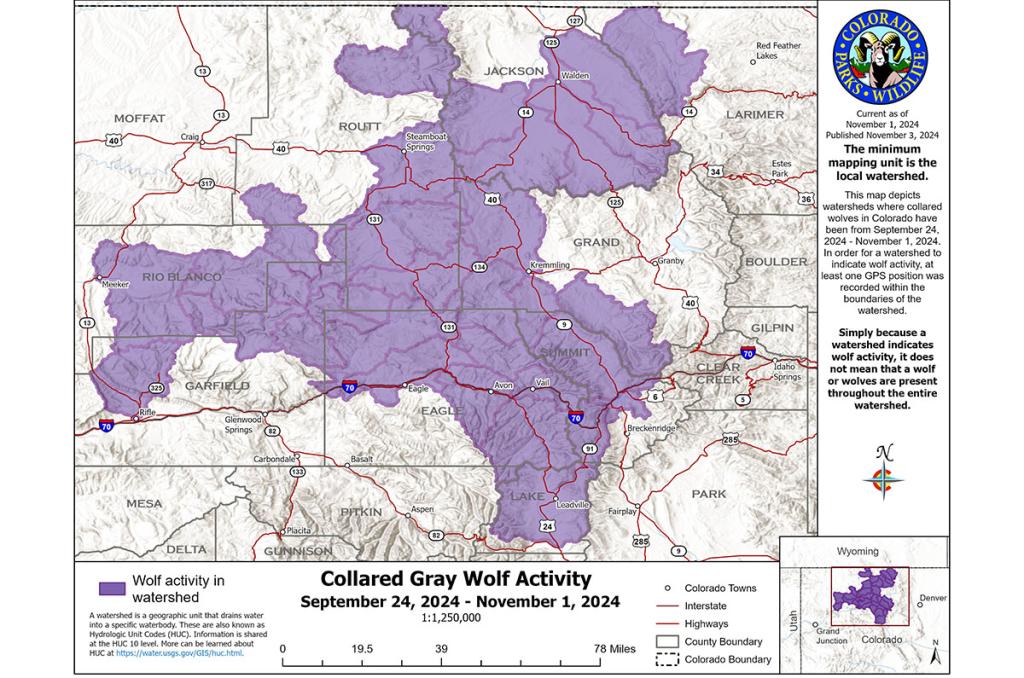Media statement: Update to wolf movement in Colorado - collared gray wolf activity observed south of I-70 for first time


The CPW website will be updated with this interim Wolf Activity Map in the coming days.
Please note, wolves need three things: food, connectivity with large wild landscapes, and space from/tolerance from humans. Translocated wolves are currently exploring the Colorado landscape and as wolf population numbers grow, some wolves will migrate to establish new territories. Wolves are habitat generalists, meaning they can thrive in a wide variety of environmental conditions and habitats. As long as prey is available, wolves can use a variety of areas. It is anticipated that wolves will expand widely over time.
CPW encourages anyone who believes they have seen a wolf to fill out the wolf sighting form found on our website. In addition to the wolf sighting form, members of the public can also find information on living and recreating in areas where wolves live.
Colorado Parks and Wildlife (CPW) is an enterprise agency, relying primarily on license sales, state parks fees and registration fees to support its operations, including: 43 state parks and more than 350 wildlife areas covering approximately 900,000 acres, management of fishing and hunting, wildlife watching, camping, motorized and non-motorized trails, boating and outdoor education. CPW's work contributes approximately $6 billion in total economic impact annually throughout Colorado.
DISCLAIMER: The Colorado Parks and Wildlife (CPW) website maintains press releases containing historical information that may no longer be accurate. Press releases are dated, which should be noted to determine whether the information provided is current. Please review our current regulations and brochures for up-to-date information.
 Travis Duncan
Travis Duncan